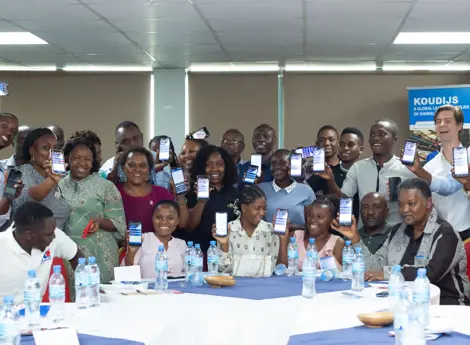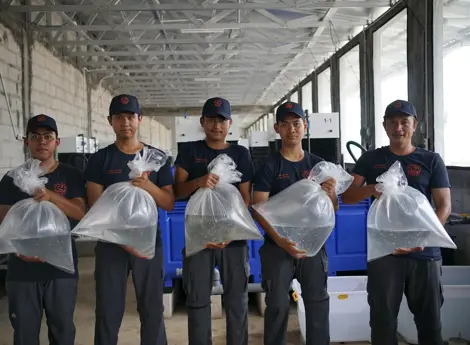How sourcing raw materials locally can improve the lives of rural farmers in Ghana
To achieve a sustainable supply chain and foster communities, De Heus Ghana's ambition is to purchase at least 50% of its raw materials from local sources by 2025. In this way, the company can improve the whole supply chain along with the economic position of local farmers. This requires the local business unit to collaborate with strong partners who share De Heus' values.
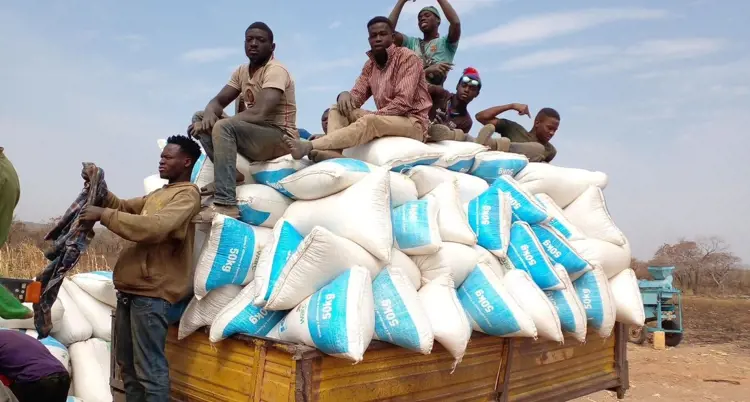
In 2021, we started feed production in Ghana and the local business unit began initiating projects to source corn locally. Our partner in this is Warc Africa (“Warc”), a social enterprise that trains local farmers in best management practices, buys their crops, aggregates them and sells them to De Heus. This helps farmers grow their business in a sustainable way so that both their livelihoods and the communities around them improve. We talk to Christopher Zaw, CEO of Warc, and Bernard Klaassen, Operations Manager for De Heus Ghana, about the partnership, its achievements and its wider impact.
Why is it important to encourage local production of raw materials?
Bernard: "Through the De Heus Responsible Feeding programme, we strongly believe we can contribute to the development of the whole supply chain and have an impact in the livelihoods of people in the supply chain. Ghana has a great deal of land and a climate suitable for growing crops like corn, soybean and cashew nuts. So why import it with the possible deforestation implications, the transportation costs and the accompanying carbon footprint? By producing corn locally we can benefit the climate and the local community."
Christopher: "Food security in Ghana is relatively sufficient, but nutrition levels are inadequate particularly among rural populations where incomes are low. There isn't enough protein consumption because it's so expensive. About 90% of poultry is imported so the price of eggs is amongst the highest in Sub-Saharan Africa. And despite having about 600 kilometres of coastline and one of the continent's biggest lakes, 60% to 70% of fish is imported. Feeding animals in Ghana is also expensive because there's not enough local production of corn and soybean. By supporting farmers and helping them develop sustainable practices, we can produce raw materials locally and bring down the cost of feed and in turn, that of food. This will also increase farmers' incomes and the nation itself can grow."
Bernard: "In Ghana, a lot of locally produced corn is used for human consumption or exported by traders to neighbouring countries like Burkina Faso where it sells for a better price. As a result, local farmers prefer to sell their corn to foreign traders instead of local buyers. During the lean season when there's a shortage of corn in Ghana, this exported corn is often imported back into the country and sold at much higher prices. So the actual profit from trading isn't going to the farmers who produced the corn but to the exporting traders. The challenge for De Heus and Warc is to break this chain by providing the right incentive for local farmers to sell their corn to us instead of a trader for a slightly better price. These incentives include providing free training, packaging for the corn, and fertiliser."
Are there any other impacts of importing raw materials?
Bernard: "Ghana is facing a challenging economic situation because of the devaluation of the Ghanaian cedi and high inflation rates related to this. The country exports products like cocoa, soybean, oil and minerals. But for foodstuffs, it relies heavily on imports from Europe and South America. For example, Ghana imports more than USD 200 million worth of frozen chicken per year. For every dollar spent on this, it has to generate local currency to convert into dollars. The same applies when importing raw materials like corn. Ghana needs local currency for conversion into dollars or euros to buy it. With the devaluation of the cedi and high inflation, more local currency is needed to buy imported raw materials."
Christopher: "To put it into context, in January 2022, the exchange rate of the Ghanaian cedi to the US dollar was 6:1. In November 2022, it was close to 16:1. And with the current inflation rate in Ghana at 50.2% year on year, that has a huge impact on the price of food."
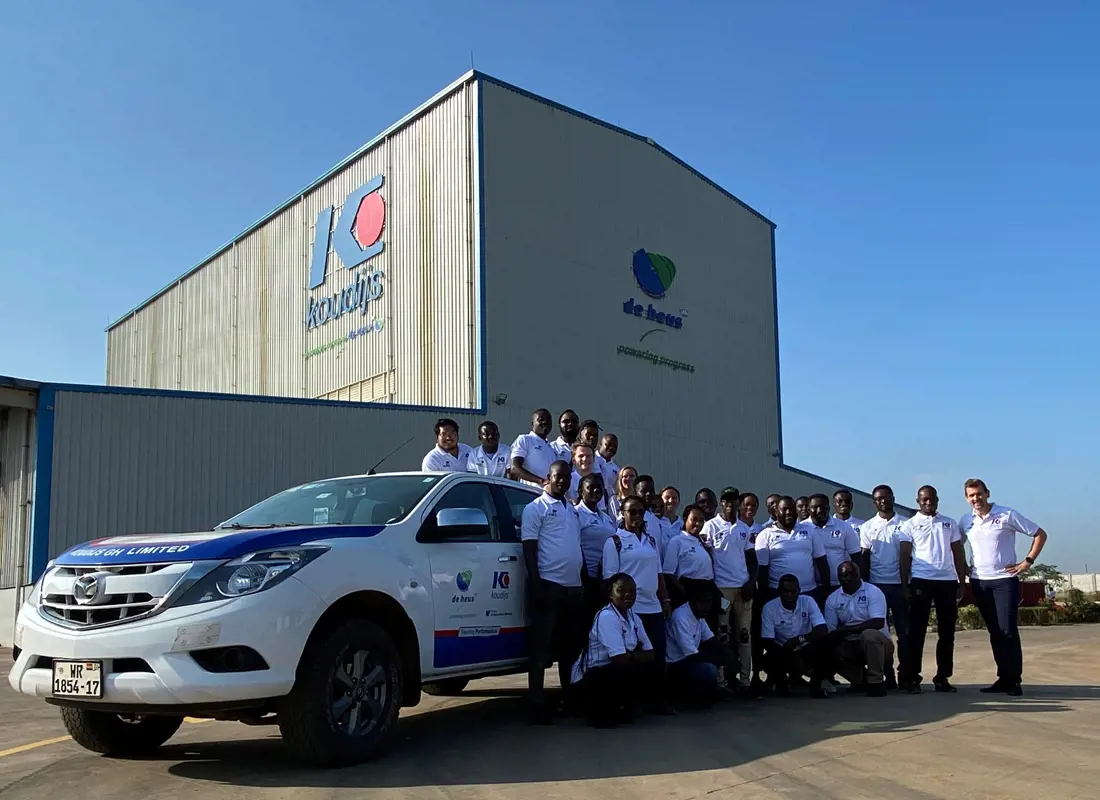
How do farmers benefit from local production?
Christopher: "Warc works with about 7,000 farmers in northern Ghana who get paid a fair and transparent price for the corn they produce. We are currently near the end of the season and have already sourced over 9,000 tons of corn locally. We project that by the end of the season we will have surpassed our goal of 10,000 tons and reached 12,000 tons or more. As well as increasing local production and farmers' incomes, we're also developing the communities around farm production. With more production there will be more economic activity and employment and income will spread to local communities."
Bernard: "Since approximately 70% of farm production costs are feed costs, these have a significant impact on farm performance and profit. With the current devaluation of the Ghanaian cedi and inflation rates at over 50%, it's a constant struggle to provide our customers with predictable products and prices, and maintain our high-quality standards. Even though sourcing local corn doesn’t necessarily mean a reduced price, it's all paid for in cedi. So with the total quantity sourced from Warc, we're able to stabilise our corn price for several months. In the short term, it allows us to charge more predictable prices to our customers, making it easier for them to make reliable sales and profit forecasts. In the long term, it will create lower and more stable prices as the market matures and professionalises, and farmers maintain good profit margins secure in the knowledge that there's a local market for their crops."
How does local production of corn contribute to environmentally responsible sourcing?
Christopher: "In general, local production reduces the environmental impact of a global supply chain. But by professionalising farmers in Ghana and improving the technologies they use, it can also benefit the environment at a local level in the medium to long-term. For example, we're working in the foothills of the Sahel, a region which is desertifying year by year, but it also feeds about 500 million people across West Africa. If farmers continue to use rudimentary techniques like deep ploughing, fire to clear land and poor methods of crop protection, the soil will continue to deteriorate. So without that base level of income improvement in the short term in this area, you end up with long-term degradation of the local environment and this has a huge impact on food security and poverty."
You mentioned that the wider community benefits from local production. Can you tell us more?
Bernard: "At De Heus, we are involved in the actual purchasing of the corn and the logistics of our factory. For example, we are currently pre-financing the corn purchased by Warc which is highly unusual. This has enabled Warc to seize every opportunity that has arisen and make huge strides. In last year's pilot project, we received less than 2,000 tons of corn. This season, we have currently received over 9,000 tons and expect to reach up to 12,000 tons if we are optimistic. If we were focused on short-term gains, it would have made more sense to stop buying this locally grown corn as the exchange rate dropped and turn to imports. But this would have seriously impacted the further outcomes of the project. We are focused on the project's long-term prospects instead of short-term gains for ourselves. We shouldn't underestimate this role since it could make or break the project and its impact on farmers and their communities."
Christopher: "When farmers' income increases and they can afford products and services like healthcare, restaurants and consumer goods, businesses will invest to deliver these things. That's how towns and communities grow. Our production target for this season is 10,000 metric tons but that's only about 10% of the potential capacity. When we reach something like 50,000 metric tons per season, it will make sense to invest in new infrastructure like silos and logistics facilities. These will benefit the local community too."
Bernard: "De Heus takes these production targets very seriously. We are currently constructing three silos for bulk storage of grains and one for the bulk storage of soybean, even though farmers in Ghana aren't currently able to deliver corn in bulk. But if we have the facilities to handle it, the next challenge is to enable local farmers and Warc to grow, harvest and transport in large volumes. This is part of the snowball effect we want to create."
“We are focused on the project’s long-term prospects instead of short-term gains for ourselves.”
Who benefits the most from local production?
Bernard: "At the moment, the profit for farmers is often much lower than for traders. This is what Warc and De Heus are trying to change with our transparent model of pricing. However, corn prices are equally distributed across the supply chain since it's a commodity traded on the world market. As a result, it's tempting for traders to buy corn locally at the lowest price, wait until the global market price increases and then sell at a higher price. This is the nature of trading, but it also prevents the local sector from growing. In the long-term, our project aims to create a stable market for farmers where they can sell their crops for a predictable price, with predictable sales and with reasonable margins. If we can achieve this throughout the supply chain, we create sustainable incomes for all stakeholders: corn farmers, poultry farmers and even consumers buying the eggs and chicken. We therefore have to ignore short-term gains and focus on our long-term objective of sourcing half of our raw materials locally by 2025. To do that we need trustworthy partners who share the same goals."
Christopher: "With commodities, you profit from the difference between your purchase price and your sales price but that ruins transparency. We are focused on our end goal to lift livestock and crop farmers in Ghana out of poverty. Any short-term wins are of no benefit to anyone. That's why we have fixed margins irrespective of any price fluctuations so the process is completely transparent."
How will you measure success?
Christopher: "There's no such thing as being poor or less poor. You're just poor. So we're not looking for marginal gains. Farmers in Ghana earn between USD 200 and USD 300 a year so we want to increase their incomes not just by 90%, but 3, 5 or 10 times."
Bernard: "We want to enable Warc to achieve these goals. Short-term success means reaching and exceeding 10,000 tons of corn sourced locally. Success in 2025 means being able to source 50% of our raw materials locally which amounts to 50,000 tons of corn. These are direct measures of success which we can easily calculate. A more abstract measure is enabling Warc to achieve its goals in its part of the supply chain. In addition to this, we have to work out our part in the supply chain and take the responsibility to commit to the project."
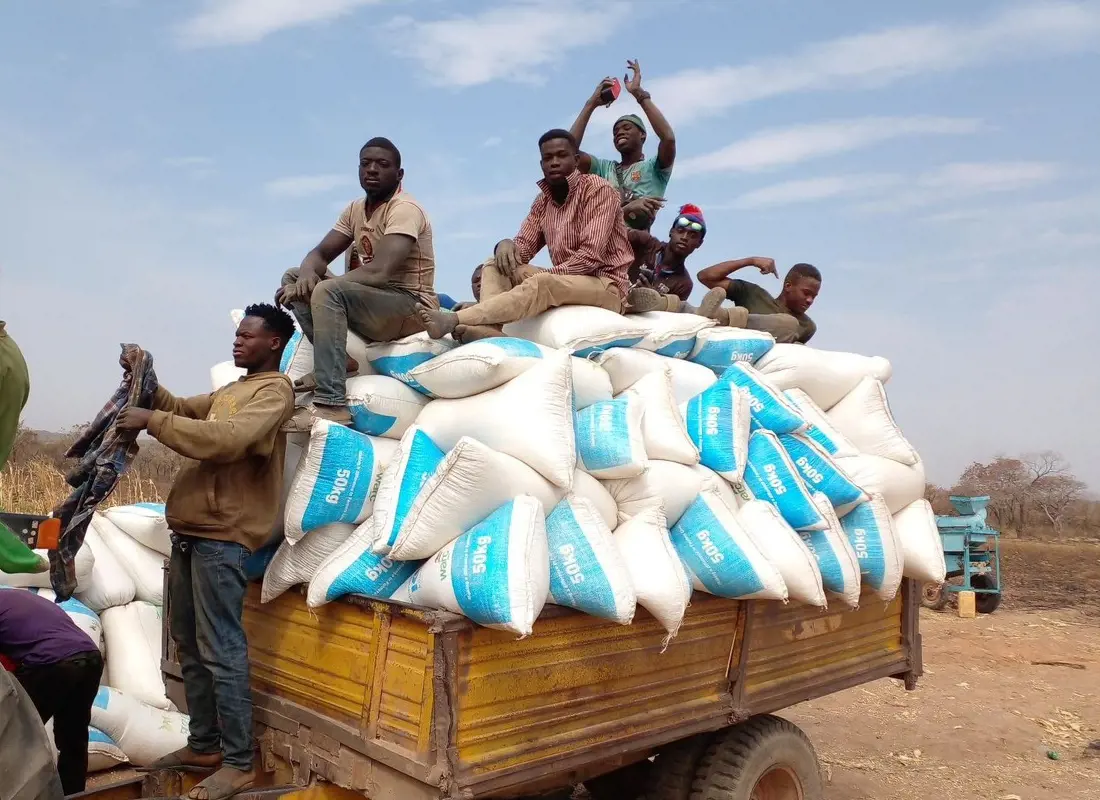
“We’re not looking for marginal gains. Farmers in Ghana earn between USD 200 and USD 300 a year so we want to increase their incomes not just by 90%, but 3, 5 or 10 times.”
Addressing human rights issues in supply chains is a big part of responsible sourcing. How important are labour conditions in your work with local farmers?
Christopher: "Because we're not focused on short-term gains, there isn't the usual need to depress labour conditions. We want to improve the way farmers earn income by professionalising their businesses and introducing technology. We want to gradually move them away from casual, low-skilled, day labour towards skilled labour with employment benefits."
Bernard: "The challenge is to improve incomes and working conditions without breaking the market. You might want to pay workers more but that isn't going to improve conditions in the long term. We want to focus on developing the whole market which will have more impact. It's a real balancing act. Paying one farmer more for his corn doesn't necessarily improve the livelihoods of more people. Yes, the farmer has more money but if he doesn't share a part of this money with his day workers the impact is minimal. The question is how can we encourage local producers in such a way that it becomes beneficial to improve their labour conditions? As Chris said, the challenge lies in gradually shifting the whole supply chain from low-skilled labour to skilled labour with all the necessary employment benefits. This will take time, dedication and investment in the right places to lift a whole sector to another level. Warc and De Heus can't do this alone but somebody has to take the first step."
What factors make the partnership successful?
Bernard: "People at De Heus are doers. There's isn't a lot of discussion and debate. If there's a bottleneck, we figure out the solution and just do it. Warc has the same winning mentality. For example, we wanted to receive corn in 50-kilogramme bags to make stacking and transport easier. But the farmers didn't want to invest in them. So we bought 200,000 branded bags and Warc distributes them to farmers. We try to think outside the box and do things differently."
Christopher: "We have to take a different approach. For instance, farmers needed fertiliser but prices were skyrocketing. We're not a fertiliser distributor, but we bought 4,000 bags of fertiliser and made them available to farmers. We've tried doing what others are doing but in a better way and it has worked. So we challenge the status quo and do something completely different. This meets with a lot inertia at first, but when we break through it, we have a great deal of success."





